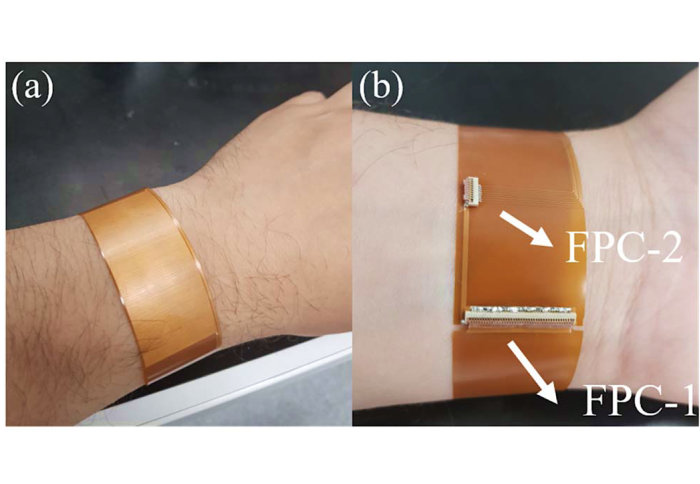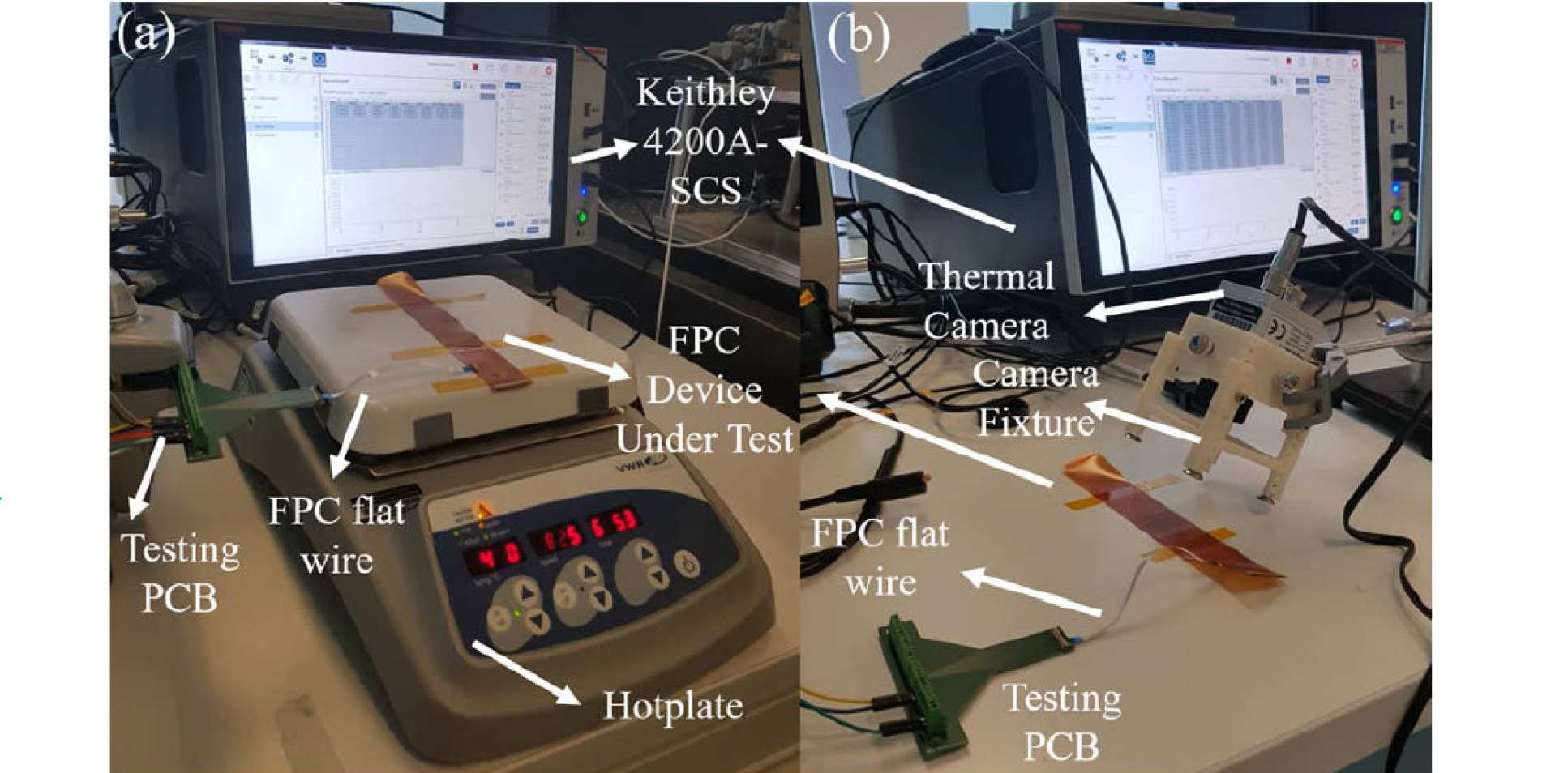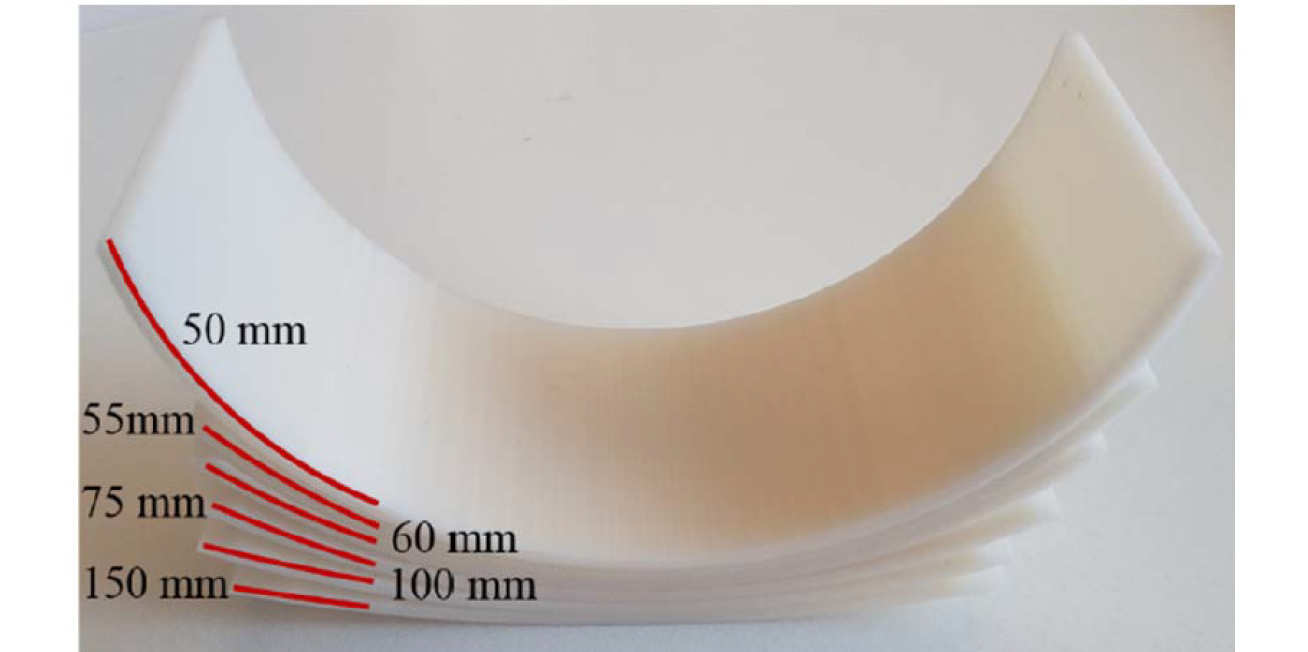

Hamlyn Centre researchers proposed a flexible wrist-worn device integrating temperature sensing and heating capabilities for thermo-therapy/regulation
Body temperature is one of the vital parameters and the most common measure and for physiological monitoring. Especially in the present situation where COVID-19 is rapidly spreading over the world, monitoring body temperature (thermometry) becomes extremely crucial for us to be aware of our daily health status.
The human body responds to infection by developing fever. Consequently, the application of specific elevated temperatures (typically between 37-40 oC) and durations to induce hyperthermia has been examined for its bactericidal effects.
 The human body has thermoregulatory capabilities, to keep body temperature within certain limits to avoid hypo- or hyperthermia, as many chemical reactions and processes in the body are temperature dependant. Thus, thermoregulation is a natural homeostatic mechanism. However, this mechanism can fail sometimes. For instance, when the human body is exposed to extreme temperature for prolonged durations, natural thermoregulation of our body may not function normally.
The human body has thermoregulatory capabilities, to keep body temperature within certain limits to avoid hypo- or hyperthermia, as many chemical reactions and processes in the body are temperature dependant. Thus, thermoregulation is a natural homeostatic mechanism. However, this mechanism can fail sometimes. For instance, when the human body is exposed to extreme temperature for prolonged durations, natural thermoregulation of our body may not function normally.
Moreover, there is also a need for thermoregulation wearable devices for people exposed to extreme environments, e.g. in high altitudes or in the Earth’s poles, particular in the space applications and thermoregulation on the inner suit of astronauts. As no significant advancements have been made in this subject since the Apollo missions, there is a renewed need for the development of new technologies and the advancement of existing solutions.
A Flexible Wrist-Worn Thermotherapy and Thermoregulation Device
Our Hamlyn Centre researchers developed a wrist-worn flexible device integrating flexible printed circuit (FPC) based temperature sensing and Joule heating capabilities for localised temperature measurements, as well as heating for thermotherapy and closed-loop thermoregulation in the hands.

In this novel integration device, the FPC-based temperature sensing demonstrated a linear relationship between temperature and achieved resistance, and the latter showed the ability to heat up to 120 oC for a current up to 600 mA with an approximately quadratic characteristic.
Furthermore, to investigate the effect of mechanical deformations to the device, 3D printed curved fixtures with radii of 50 mm, 55mm, 60 mm, 75 mm, 100 mm and 150 mm were designed in SolidWorks (Dassault Systemés SE, France) and printed using a Fortus 400mc using the ABS M30i material (Stratasys, Ltd., Israel).

The result showed that the 3D printed fixtures accommodate larger curvature than that of the wrist and the bending of the device does not severely influence the resistance of the device structures.
This study has shown that FPC technology has the potential to be used as part of a thermoregulation system, with applications in health monitoring or extreme environment close loop temperature control.
This research was supported by EPSRC Programme Grant “Micro-robotics for Surgery (EP/P012779/1)” and was published in 2019 IEEE 19th International Conference on Bioinformatics and Bioengineering (BIBE) (, "Towards a Flexible Wrist-Worn Thermotherapy and Thermoregulation Device").
Supporters

Article text (excluding photos or graphics) © Imperial College London.
Photos and graphics subject to third party copyright used with permission or © Imperial College London.
Reporter

Erh-Ya (Asa) Tsui
Enterprise

Contact details
Email: press.office@imperial.ac.uk
Show all stories by this author



